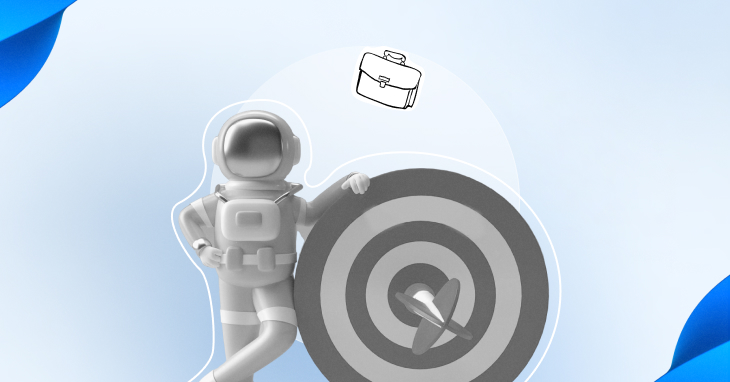
In the competitive world of business, customer retention is essential for long-term success. Yet, many businesses struggle with “leaky bucket syndrome,” where customers are continually leaving, causing revenue and growth opportunities to slip away.
In this guide, we’ll explore how to identify and plug the leaks in your business and boost customer retention. By implementing effective strategies and leveraging tools like Toolyt, you can turn your leaky bucket into a wellspring of loyal, satisfied customers.
Understanding Customer Retention
Customer retention refers to the ability of a business to retain its existing customers over time. It’s about building strong relationships, providing value, and meeting or exceeding customer expectations to keep them coming back for more.
Retaining customers is more cost-effective than acquiring new ones, as loyal customers tend to spend more, refer others, and contribute to long-term business growth.
The Leaky Bucket Syndrome
The “leaky bucket syndrome” is a metaphor often used in various contexts to describe a situation where resources or opportunities are wasted or lost over time, despite efforts to retain them. Just like water leaking from a bucket with holes, in this scenario, valuable resources or benefits slowly drain away, often due to inefficiencies or flaws in a system.
The leaky bucket syndrome occurs when businesses are losing customers at a faster rate than they are acquiring new ones. This can be caused by various factors, including poor customer service, lack of engagement, subpar products or services, and increased competition. Regardless of the cause, the result is the same: lost revenue, diminished brand reputation, and missed opportunities for growth.
Identifying the Leaks
The first step in plugging the leaks in your business is identifying where they are. Analyze your customer data to pinpoint areas of concern, such as high customer churn rates, declining customer satisfaction scores, or low repeat purchase rates. Additionally, gather feedback from customers through surveys, reviews, and direct communication to understand their pain points and reasons for leaving.
Identifying leaks in a business for customer retention involves a systematic analysis of various touch points and processes within the customer journey. Here’s a comprehensive approach to pinpointing and addressing these leaks:
- Customer Feedback Analysis: Regularly gather and analyze customer feedback through surveys, reviews, and social media channels. Look for recurring themes or complaints that indicate areas needing improvement.hh
- Churn Analysis: Examine customer churn rates to identify patterns and reasons for customers leaving. Isolate common factors contributing to attrition, such as poor service, product issues, or competition
- Customer Journey Mapping: Map out the entire customer journey, from awareness to post-purchase support. Identify potential friction points or gaps where customers may be lost or dissatisfied.
- Data Analytics: Utilize data analytics tools to track customer behaviour and engagement metrics. Monitor key performance indicators (KPIs) such as conversion rates, average order value, and customer lifetime value to identify trends and anomalies.
- Customer Service Interactions: Analyze interactions with customer service representatives to identify recurring issues or pain points. Look for opportunities to improve response times, resolution rates, and overall customer satisfaction.
- Competitive Analysis: Study competitor offerings and customer experiences to benchmark your business against industry standards. Identify areas where competitors may be outperforming and opportunities for differentiation.
- User Experience (UX) Evaluation: Assess the usability and effectiveness of your website, app, or physical storefront. Look for barriers to conversion or navigation issues that may hinder the customer experience.
- Personalization Efforts: Evaluate the effectiveness of your personalization strategies in addressing customer needs and preferences. Identify opportunities to tailor products, communications, and offers to individual customers.
- Cross-Functional Collaboration: Foster sales collaboration between departments such as marketing, sales, customer service, and product development to address leaks holistically. Break down silos to ensure a seamless and cohesive customer experience.
- Continuous Improvement: Establish a culture of continuous improvement where feedback is valued and processes are regularly reviewed and optimized. Implement agile methodologies to quickly iterate and respond to changing customer needs.
By systematically analyzing these areas, businesses can identify and address leaks in their customer retention efforts, ultimately improving customer satisfaction, loyalty, and long-term profitability.
Strategies to Plug the Holes
Once you’ve identified the leaks in your business, it’s time to take action to plug them. Here are some effective strategies to boost customer retention:
- Improve Customer Service
- Enhance Product or Service Quality
- Personalize the Customer Experience
- Build Customer Loyalty Programs
- Stay Connected with Customers
- Gather and Act on Feedback
- Offer Value-Added Services
- Improve Customer Service: Invest in training and empower your customer service team to provide exceptional support and resolve issues promptly and effectively.
- Enhance Product or Service Quality: Continuously monitor and improve the quality of your products or services to meet or exceed customer expectations.
- Personalize the Customer Experience: Tailor your marketing messages, offers, and communications to individual customer preferences and behaviours to create personalized experiences.
- Build Customer Loyalty Programs: Implement loyalty programs and incentives to reward repeat purchases and encourage customer loyalty and advocacy.
- Stay Connected with Customers: Keep in touch with customers through regular communication channels such as email newsletters, social media, and personalized outreach to stay top of mind and foster ongoing engagement.
- Gather and Act on Feedback: Solicit feedback from customers regularly and use it to identify areas for improvement and make necessary changes to enhance the customer experience.
- Offer Value-Added Services: Provide additional value to customers through educational resources, exclusive offers, and special events to deepen their relationship with your brand.
Leveraging Toolyt for Enhanced Customer Retention
Toolyt is a powerful tool that can help businesses streamline their customer retention efforts and plug the leaks into their business. With its advanced features for data analysis, customer communication, and sales task automation, Toolyt empowers businesses to identify and address retention challenges more effectively.
By leveraging Toolyt, businesses can track customer interactions, gather valuable insights, and take proactive steps to improve retention rates.
Conclusion
In conclusion, customer retention is paramount for long-term business success, yet many businesses struggle with leaky bucket syndrome. By understanding the factors contributing to customer churn and implementing effective retention strategies, businesses can plug the holes in their business and boost customer retention.
As you strive to enhance customer retention in your organization, consider leveraging tools like Toolyt to streamline your efforts and maximize your impact. With its advanced features and intuitive interface, Toolyt empowers businesses to identify retention challenges, take proactive steps to address them, and build stronger relationships with their customers.
Embrace these strategies and tools today to turn your leaky bucket into a fountain of loyal, satisfied customers.

